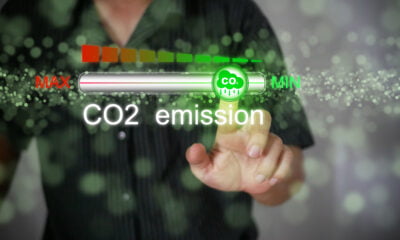

Features
6 Practices for Sustainable and Eco-Friendly Plant Operations
It’s a known fact that the negative effects of human activities like pollution and deforestation greatly contribute to the degradation of the environment. As a result, extreme weather conditions caused by climate change have wreaked havoc and dealt a blow on people, plants, animals, and the environment itself. Even though major industries play a key role in our economic and social development, their carbon footprint (the amount of greenhouse gases emitted by activities) are significantly worrying.
Businesses around the world are now becoming more aware of and are now embracing environmentally-friendly ways to conduct their operations. However, it’s challenging for some industries to just completely abandon their ways of operations just for the sake of ‘going green’ and risk taking a hit on productivity.
A compromise can be reached if industries embrace sustainable eco-friendly practices in their operations. This will be a win-win situation for the environment and plant owners because the environment will be less affected, and operations will continue without sacrificing productivity.
Below are some practices you can implement to achieve sustainable and eco-friendly plant operations:
1. Plan the Transition
When you decide to go green, the first step you should take is to make a checklist of all your daily operations, and then identify the best way of reducing each operation’s carbon footprint. To do this, you’ll need a device like a Programmable Logic Controller (PLC) which will be used to integrate all your industrial processes so that they can be programmed to work in cohesion. A PLC system integrator will install, program, and maintain the PLC on your behalf.
2. Overhaul Processes with Sustainable Alternatives
Fossil fuel is no doubt central to power generation in industrial processes, especially in power generation. Unfortunately, using coal and natural gas for power generation is one of the largest causes of water and air pollution. Going green can seem daunting, especially with the thought of an almost complete overhaul of your operations. You’ll definitely incur significant initial costs, but there’ll be long-term benefits, to your business and the environment.
Start by implementing sustainable and energy effective alternatives solutions like, transitioning to the use of renewable energy like solar panels or hydropower to run your plant, or switch from using incandescent bulbs and fixtures to LED lighting technology which use less energy and last longer. You may also consider ditching the old generation air compressors and acquire the new generation ones that are oil free and generate clean compressed air.
3. Reduce Waste
In the past, the primary objective of production was to reduce costs and time to market, without considering the waste that was incurred in the process. When you make conscious decisions to reduce wastage in the plant, you’ll save considerably and even reduce energy consumption. Explore ways to minimize waste by investing in precision manufacturing equipment which will considerably reduce the amount of waste produced.
4. Recycle
The aim of sustainable waste management is to: decrease the volume of natural resources consumed, reuse materials taken from nature, and create the least amount of waste as possible. Recycling and reusing of waste materials plays an important part in your operation’s sustainability. It’ll save energy, minimize waste, lessen the burden on landfills, and potentially even act as a complementary source of raw materials for new products. The initiative will decrease the carbon footprint of your plant.
5. Use Efficient and Sustainable Materials for Packaging
Packaging is always overlooked by plant owners when going green, yet it plays a big role in the finished product. To start off, you can use less packaging as you move towards sustainable recyclable material. Source sustainable packaging material from local partners, so that you can reduce your logistics’ carbon footprint. Try not to over-package the products as they pass through different touchpoints that end up using more energy.
6. Minimize Use of Paper
Switching to digital documents and internal communication in the plant will mean less use of paper. If the demand for paper decreases, so will the need to cut down trees necessary to produce fresh paper. Moreover, switching to a more digitally-oriented format for most of your documentation and communication makes it easier to adapt efficient solutions such as cloud computing and company-wide implementation of any changes.
Conclusion
More and more companies are now taking measures by turning to cleaner energy sources to power their operations and reduce their carbon footprint. At the end of the day, whether your reason for going green is to be globally competitive, or you just want to integrate sustainability across your business functions or for whatever other reason, just know it is worth the effort. Always remember that however insignificant the steps you take for sustainability may seem, know that you are doing your bit to conserve the planet.


















